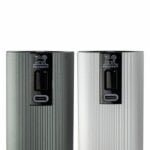The EU may step up CO2 testing for plug-in hybrids, following criticism that current tests do not reflect real-world emissions.
The European Union intends to strengthen its method of measuring carbon dioxide emissions from plug-in hybrids, two sources familiar with the matter said, according to critics that current tests give results up to four times lower than actual emissions.
The new methodology could mean that some carmakers that sold almost as many plug-in hybrids as all-electric vehicles in Europe last year would have to sell more electric vehicles to meet EU emissions targets and avoid considerable fines.
The revised test may be applied around 2025, sources said.
Data from fuel consumption meters, which according to EU law must be integrated into new cars in 2021, will be incorporated into the test, they said. This will show a more realistic picture of how much plug-in hybrids rely on their internal combustion engine over the electric battery.
“The utility factor will be changed,” Petr Dolejsi, director of sustainable transport for the ACEA lobby group, told Reuters, referring to the average estimate of how far an electric-only hybrid travels.
“We’re starting to collect data from vehicles – it’s an ongoing process.”
An official from the European Commission said that an amendment to the WLTP test protocol to determine the utility factors based on actual data from fuel consumption meters is under discussion, but that they are unable to provide further details.
Reality versus theory
Automakers, which are still recovering from the 2015 Volkswagen scandal, in which illegal software was used to defraud emissions tests, often release the results of their emissions tests earlier this year. The official figures will not be published by the European Commission until later.
Volkswagen, Mercedes-Benz, BMW and Renault have said they have met their 2021 targets, supported by record sales of electric vehicles.
According to the WLTP test implemented last year, automakers pay inspectors to supervise them to perform a standardized test for all types of vehicles – from internal combustion to hybrid to electric battery. This is done in their laboratories to find a figure for the average CO2 carbon per kilometer.
The targets for 2021 were around 95 grams of CO2 per km, varying slightly, as each car manufacturer’s target is adjusted according to the average weight of its vehicles.
The WLTP testing process was designed based on real-world data on how and where people tend to drive, from distance and speed to the type of road – a significant improvement over the previous test, known as NEDC, which was based exclusively on theoretical models.
But studies by environmental think tanks, such as the International Council on Clean Transport, show that the WLTP test is far from a reality, especially for plug-in hybrid cars, which rely on the combustion engine about twice as much. more than the test results show.
“Emissions are still falling every year, and this is a real success,” said Peter Mock, ICCT’s Director General for Europe. “But the big problem is hybrids – that’s what’s misleading.”

 Renault’s compact family SUV will be called the Symbioz -.
Renault’s compact family SUV will be called the Symbioz -. Peugeot and its new range of salt and pepper mills -.
Peugeot and its new range of salt and pepper mills -. A new Uber Eats ad is being criticized for showing a peanut allergy -.
A new Uber Eats ad is being criticized for showing a peanut allergy -. Pagani announces new track-based hypercar, known as the Huayra R Evo -.
Pagani announces new track-based hypercar, known as the Huayra R Evo -. Introducing the Oscars in the Best Casting category -.
Introducing the Oscars in the Best Casting category -.